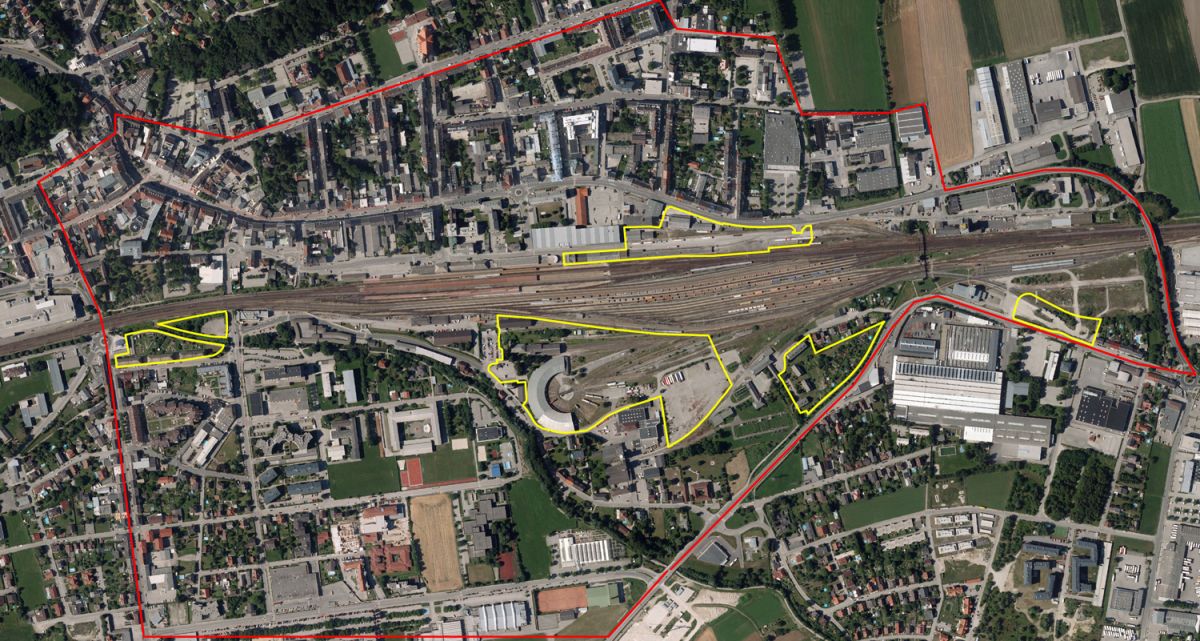
AMSTETTEN
CATEGORY
Urban
TEAM REPRESENTATIVE
Architect / Urban Planner / Landscaper
LOCATION AMSTETTEN
Lower Austria
POPULATION
City 23 000 inhabitants
Conurbation 110 000 inhabitants
STRATEGIC SITE
117 ha SITE OF PROJECT 1,8/0,6/5,6/1,2/1 ha
SITE PROPOSED BY
City of Amstetten & OEBB Austrian Railway Company
OWNER(S) OF THE SITE
OEBB Austrian Railway Company
COMMISSION AFTER COMPETITION
Urban project management role,
further involvement in architectural follow-up procedures
Detailed information / Registration:


CITY AT THE TRAIN-RIVERFRONT
HOW THE SITE CAN CONTRIBUTE TO THE ADAPTABLE CITY?
The train has been playing an important role in the development of the city: the main east-west line of Austria runs through the town. Due to technological and logistical adaptations the railway company can offer parts of their terrain for urban development. The city can take advantage of this opportunity and adapt its border to the railway as a productive limit with 2 faces, one directed to the city, the other one to the trains.
CITY STRATEGY
The city is concerned with its eastern and western entrance points to the inner city. They are important visible interfaces, not only between train and town but also between the consolidated inner city and the surrounding areas. A main concern and potential is the city‘s ambiguous relation to the train as a public and technical corridor, as a connecting and separating element, as a „machine“ that blocks and enables panoramas of the town, and, above all, as a sustainable means of transport that networks the economy of the city.
SITE DEFINITION
Amstetten profits strongly of its station which is part of the most important east-west train connection, the „Westbahn“. The territory of the railway not only occupies but also characterizes the extensive land of the commune which stretches along the railway course. The historical town has been growing eastwards, incorporating the main station area, around which the site is located. Fragments of industrial, commercial and housing developments, as well as main traffic infrastructures characterize this entrance point of the city . A series of fragments around the railway station form the competition area at the fringe between train and town. An overall urban strategy, able to create a new added value needs to be developed.
It is important to perceive Amstetten’s new geography: a central place between Salzburg and Vienna, linked with numerous towns, countrysides, and even 2 airports (Linz and Vienna). Second, it is important to give an identity to this new geography: to materialize on the local level the convenience of its geography. If Amstetten is one of the best connected towns in Austria, it also has to become one of the most livable towns: attractive and connective…
Seen in this light, it is absolutely important to develop an overall strategy – “a common sense” – for the fragmented areas, to see their tasks in an overall development-concept which will redefine the relation between the city and the railway. In order to avoid a purely formalistic approach whose common sense is based exclusively on typological or all too obvious similarities, the physical, the programmatic and the cultural relationship have to be studied.
ADAPTABILITY : MAIN ELEMENTS TO TAKE INTO ACCOUNT
*the positive tension between the railway space and local qualities, including possible feedback processes for the mutual development
*the question of uses and its possible elasticity, especially concerning the challenging fringe conditions
*the issue of development in time considering the independent development of the different pieces, as well as unforeseeable dynamics concerning the restructuring of the area
